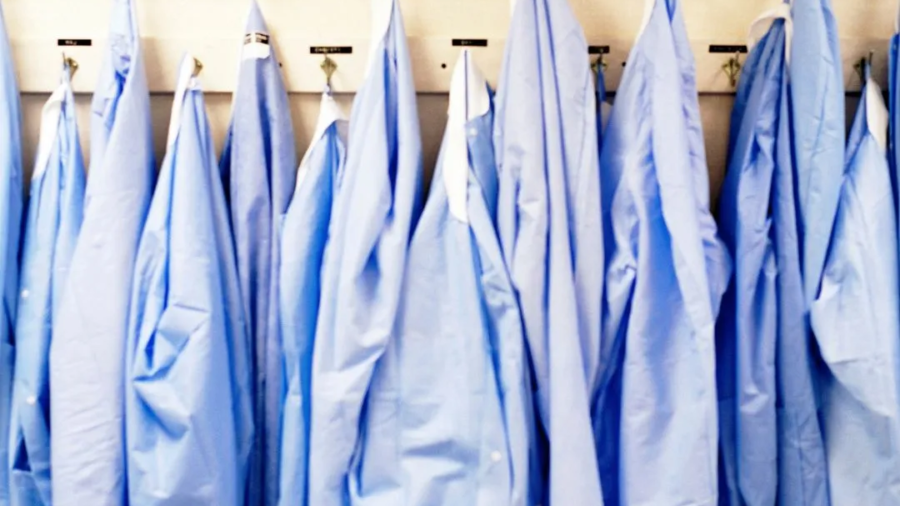In high-risk work environments, safety isn’t optional — it’s essential. That’s where industrial coveralls come in. These one-piece uniforms offer full-body protection and are a staple in industries like manufacturing, oil and gas, construction, and automotive.
Whether you’re working around heavy machinery, chemicals, or dirt, coveralls are a type of workers uniform designed to keep them safe, clean, and comfortable. In this blog, let’s explore the top benefits of industrial coveralls and why they’re a smart investment for any business.
Benefits of Industrial Coveralls
1. Full-Body Protection
The primary advantage of coveralls is their ability to cover the entire body — from neck to ankles and wrists. This reduces the chances of injuries from:
- Chemical splashes
- Oil spills
- Welding sparks
- Sharp metal debris
- Dust and grime
Unlike two-piece uniforms, coveralls eliminate gaps between the shirt and trousers, offering better overall protection.
2. Enhanced Workplace Safety
Many industrial coveralls are made with specialized safety features, such as:
- Flame-retardant fabrics
- Anti-static materials
- High-visibility strips
- Reinforced stitching
This makes them suitable for hazardous environments where workers are exposed to fire, electrical hazards, or explosive materials. By wearing appropriate safety-rated coveralls, businesses can comply with industry safety standards and reduce workplace accidents.
3. Boosts Professional Image
Uniformity in the workplace plays a huge role in building trust and professionalism — both internally and externally. Industrial coveralls:
- Make employees look disciplined and coordinated
- Create a strong team identity
- Project a professional image to clients, auditors, and visitors
Many companies choose custom-branded coveralls with embroidered logos and brand colors for added recognition.
4. Increased Durability
Industrial work is demanding. Workers often deal with sharp tools, heavy equipment, or corrosive substances. Coveralls are built with heavy-duty fabrics like cotton blends, polyester, or denim, which:
- Resist wear and tear
- Withstand frequent washing
- Offer long-term use without losing shape or functionality
Over time, investing in high-quality coveralls reduces replacement costs and improves ROI.
5. Comfort & Mobility
Top uniform manufacturers design modern coveralls not only for protection but also for comfort and ease of movement. With features like:
- Breathable fabric
- Elasticated waist
- Zippered closures
- Ventilation panels
- Adjustable cuffs
… workers can stay productive without feeling restricted. There are also coveralls made specifically for different seasons — including insulated options for cold weather or lightweight designs for warmer conditions.
6. Cost-Efficient Uniform Option
Coveralls eliminate the need to supply separate shirts, pants, and aprons. A single uniform covers everything. This:
- Reduces procurement complexity
- Minimizes laundering costs
- Simplifies inventory management
Especially for large teams, coveralls become a practical and economical choice for industrial uniforms.
7. Maintains Personal Hygiene
In industries like pharmaceuticals, food processing, or chemical handling, hygiene is non-negotiable. Coveralls:
- Protect personal clothing from contamination
- Prevent workers from carrying contaminants home
- Are easy to wash and sanitize
Some versions are even disposable or anti-microbial, ensuring maximum cleanliness in sterile environments.
8. Functional Design with Utility Pockets
Many coveralls are equipped with multiple pockets for tools, pens, gloves, or small instruments. This saves time, increases efficiency, and reduces the need to carry extra tool belts. For workers constantly on the move, it’s a handy feature that improves workflow.
9. Weather Protection
Workers operating in outdoor or extreme temperature conditions benefit from weather-resistant coveralls. These uniforms offer:
- Windproof and waterproof layers
- Insulated lining for cold storage
- Sun protection and UV resistance
This keeps workers safe and comfortable in any weather condition.
10. Compliance with Industry Standards
Wearing approved industrial coveralls helps companies meet health, safety, and labor regulations. Industries like oil & gas or welding have strict compliance standards for PPE (Personal Protective Equipment), and specialized coveralls play a key role in fulfilling those requirements.
Conclusion: A Must-Have for Industrial Workplaces
From protection and durability to comfort and compliance, industrial coveralls offer a complete solution for modern workwear needs. They not only safeguard workers but also reflect the company’s commitment to safety, professionalism, and efficiency.
Looking for an industrial uniform manufacturer to outfit your team with durable, custom-branded coveralls? Get in touch with our team for bulk orders, fabric consultation, and personalization options tailored to your industry needs.



